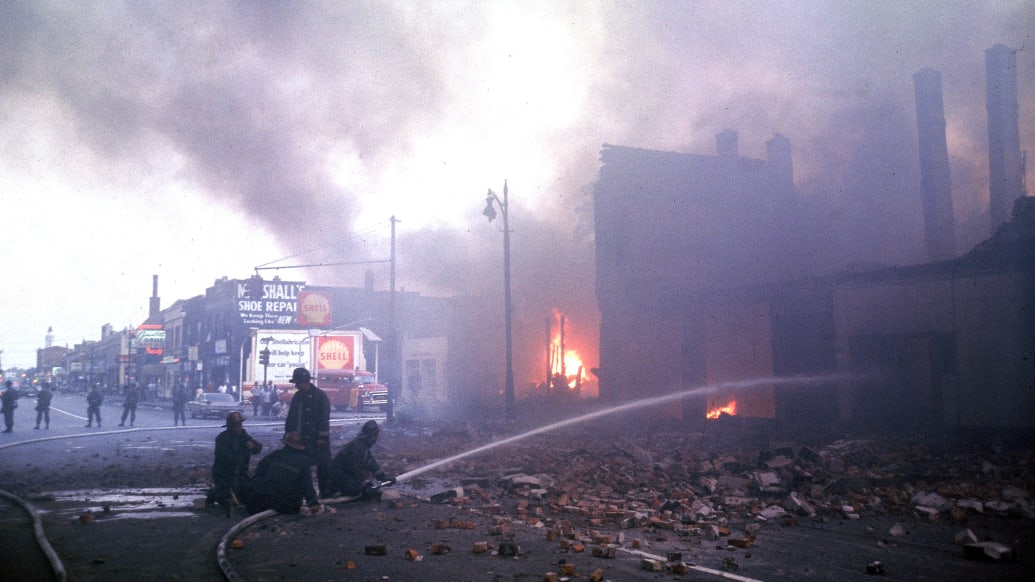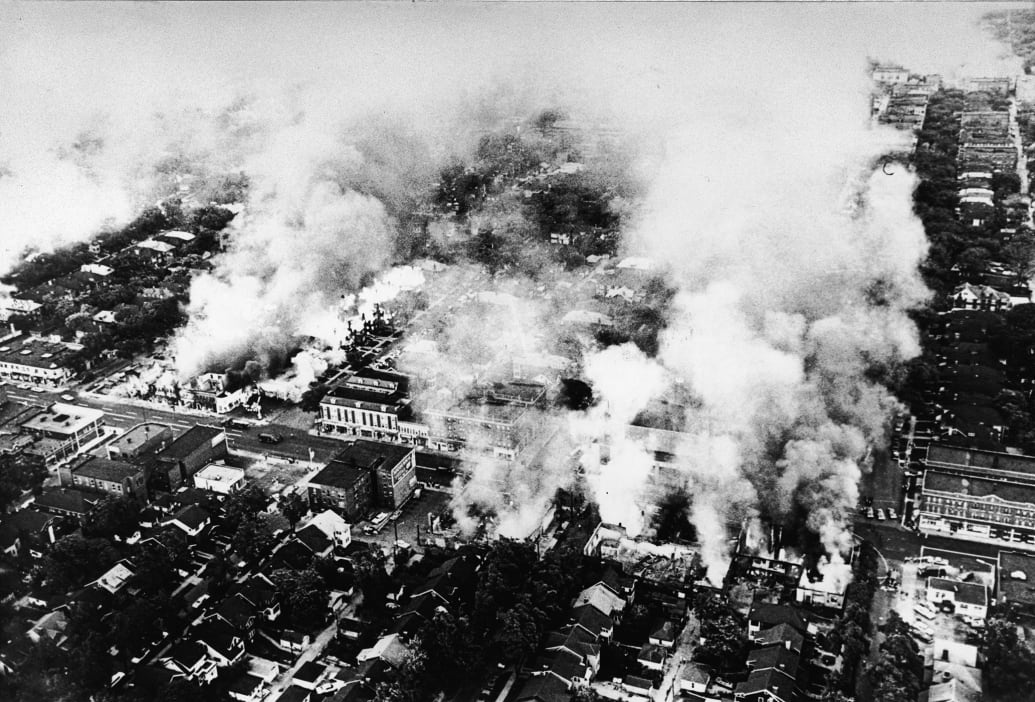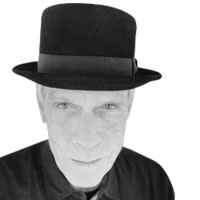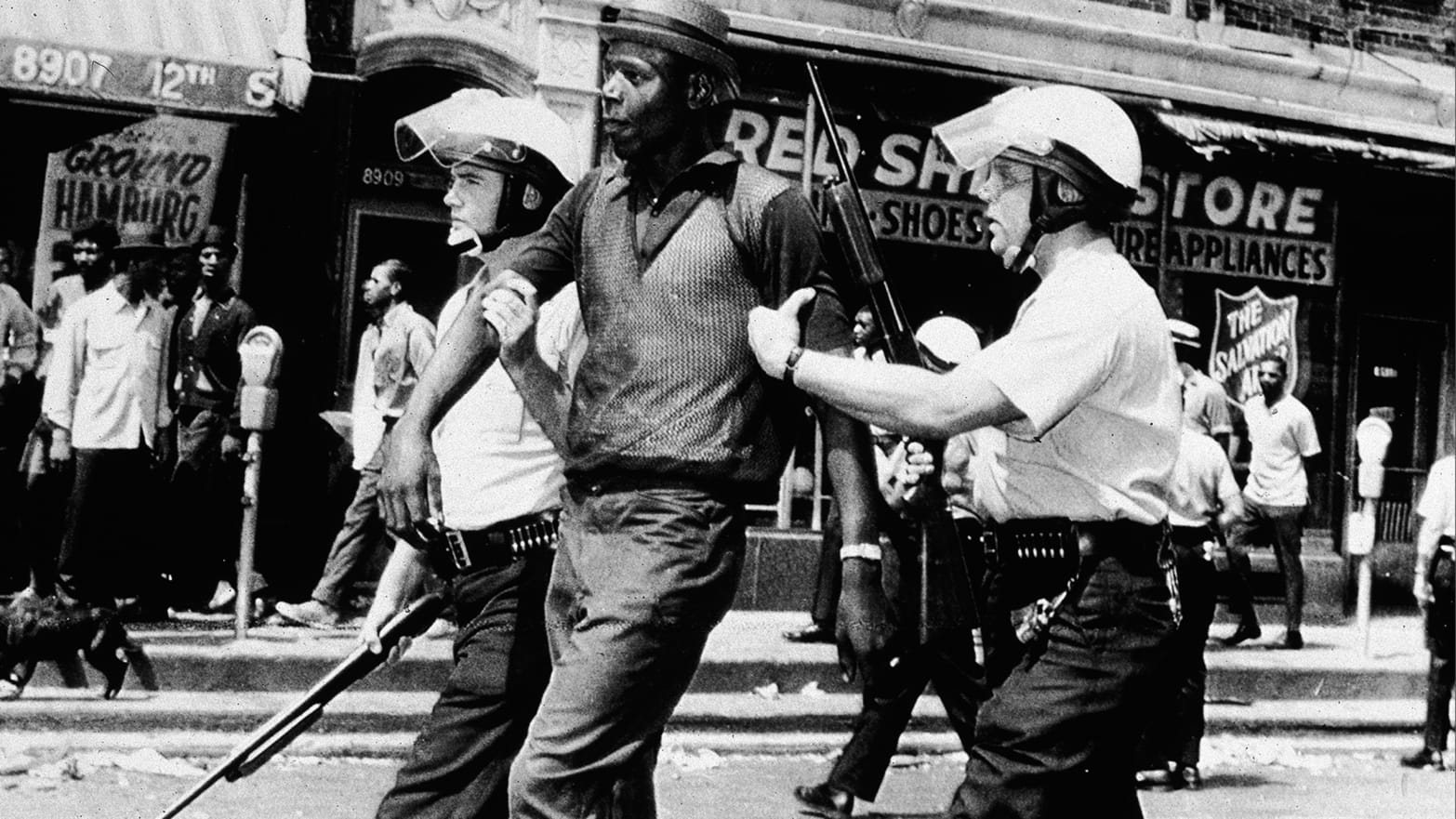1. The Fuse
Fifty summers ago, in the small hours of a gummy Sunday morning in July 1967, the Detroit police converged on the intersection of 12th Street and Clairmount for a routine raid on a blind pig—local parlance for the illegal after-hours drinking and gambling houses sprinkled throughout the city’s black neighborhoods. This one was hosting a party for a neighborhood man who had returned safely from military service in Vietnam. After police smashed their way into the club and the jukebox died, revelers were hustled down the stairs and into waiting paddy wagons. Twelfth Street was always abuzz with life at night—“an ugly neon scar” in the words of one poet at the Free Press newspaper—and this police sweep attracted a crowd.
Most of the cops were white but almost everyone else was black, and the crowd began taunting the cops for their rough handling of the blind pig’s patrons, especially the women. “You don’t have to treat them that way!” someone shouted. “They can walk, let ’em walk, you white sons-of-bitches!”
A young man standing near the door of the club yelled at the cops, “Hey, you goddam white motherfuckers, why don’t you get your asses out of here?” A cop with a nightstick told the young man to move or get hurt. So he crossed the street and climbed onto a car and bellowed, “Are we gonna let these peckerwood motherfuckers come down here any time they want and mess us around?”
“Hell no!” came the reply.
Then the young man fished in an alley for an empty bottle and threw it at a cop, hoping to kill him. The bottle exploded at the cop’s feet, and an electric charge shot through the amped-up crowd. Emboldened, they rained insults and bricks and bottles on the last paddy wagons and police vehicles as they retreated toward downtown.
The young man who had thrown the first bottle would say later that when he watched those cop cars melt into the night, he felt free for the first time in his life. He picked up a litter can and smashed a drug store’s window. Drawn by the ringing alarm and the eerie absence of police, people slowly began stepping through the hole in the glass and taking things. Then someone broke into the clothing store next door, drawing more looters. The fuse had been lit. Soon the Motor City was burning, and when the last flames were extinguished five days later, the place was forever changed. Forty-three people were dead. More than 7,000 had been arrested and more than 1,000 injured. More than 2,500 buildings had been burned down or damaged beyond repair, entire blocks reduced to rubble and ash. Some $45 million in property had been destroyed.
Now, 50 years later, people in Detroit are still debating what to call events in the cataclysmic summer of 1967. Was it a riot? A rebellion? A civil-rights uprising? Or was it something else? The search for an answer will remind us, once again, of the revelatory power of language.
2. “Get some loot and scoot”
The man who threw the first bottle on 12th Street was a 19-year-old Detroit native named William Walter Scott III, known as Bill. He went on to write a memoir about his troubled upbringing and his role in the events of July 1967, including the two weeks he spent in police custody on trumped-up looting charges unrelated to the events outside the blind pig. Scott’s book, Hurt, Baby, Hurt, is a raw, disjointed and pungent account of what it was like to grow up poor and black in an urban ghetto in America’s post-war boom years. Writing in Bridge magazine recently, the veteran Detroit reporter Bill McGraw gave the book a fair appraisal: “Perhaps no other account delves in such a deeply personal way into the rage and despair that drove so many black Detroiters into the streets that summer.”
The despair came from many sources: inferior schools (Scott calls his alma mater, Northern High School, a “nigger factory”), poor job prospects, shabby housing, and real-estate practices that penned black people into neighborhoods like 12th Street, which Scott painted as a grim world of “smoggy atmosphere, junkies, nasty old buildings, winos, and beat-up prostitutes standing at the corner.” To sharpen the sting, this prison was located in the middle of one of the most prosperous cities in the world, but the bounty was mostly unavailable to those inside the prison. The rage came from a more specific source: the Detroit Police Department, a 95-percent-white force that was viewed as an occupying army by Scott and many other residents of black neighborhoods like 12th Street, not only in Detroit, but in Newark and Los Angeles and many cities in between. As Scott writes, “The first thing you learn about cops is, don’t question their motives or you’ll be locked up for being a smart nigger.”
But after repeated run-ins with the police, it was inevitable that angry young black men like Bill Scott would questions the cops’ motives. And their methods. The Detroit police did a lot of freelance head-knocking back then—“alley court was always in session,” as the saying went—but the true scourge was the so-called Big Four, a police cruiser with a uniformed cop at the wheel and three plainclothes detectives along for the ride. Their mission, in Scott’s words, was “busting prostitutes, dope pushers, and just plain fucking with people.” The Big Four took their work seriously, and a lot of Detroiters, including Bill Scott, seethed.

Declan Haun/The LIFE Picture Collection/Getty
It was this bottled anger that exploded, spontaneously, on 12th Street. Yet even Scott stopped short of describing the ensuing orgy of looting, burning, and shooting as some pure and justified expression of pent-up rage. He acknowledges that there were plenty of opportunists, black and white, who saw the chaos as a chance to “get some loot and scoot.” (About 10 percent of those arrested were white.) “But,” Scott writes, regardless of their race “the rioters and looters did have one common interest: lack of respect for the law, the law that had abused them and their right to live.”
Some rioters were also motivated by vengeance, by the desire to destroy the property of white merchants who, it was widely felt, exploited their captive customers. This led many black shopkeepers to spray paint SOUL BROTHER and AFRO ALL THE WAY on their businesses, a plea for arsonists and looters to pass them by, a plea that was not always heeded. Others were motivated by simple blood lust, by a desire to kill people, especially figures of authority. Their success rate was not high. Of the 43 people who died, one was a Detroit police officer; one was a National Guardsman; two were firefighters; most of the rest were citizens killed by gunfire from police, poorly trained (and mostly white) National Guardsmen, security guards, storeowners and, possibly, snipers. Of the dead, 33 were black and 10 were white.
3. Where did such fury come from?
Once order had been restored, most Detroiters, myself included, began to refer to the violence as “the riot,” with the implication that it was unplanned and unfocused, a five-day street brawl, pure destruction. The Detroit News called it a “guerilla war.” Some called it a “civil-rights disturbance,” though no civil rights organizations were involved. Others called it a “race riot,” though there was little conflict between white and black citizens—in sharp contrast to the pitched inter-racial battles in 1943 that left 34 Detroiters dead. As the Free Press noted in 1967: “Negroes and whites loot together, stand side by side to watch buildings burn, go to jail together.” Just about everyone could agree that the violence was not the thing feared so widely in white communities—a race war orchestrated by black radicals.
All along, a vocal group of Detroiters insisted on calling the events of 1967 “the rebellion,” with the implication it was a response to a history of injustices in policing, housing, schools, jobs, and civil rights. State legislator David Holmes, a Detroit Democrat, summed up this sentiment: “Rather than calling the recent trouble a ‘civil disturbance,’ it should be called a ‘rebellion against the established power structure.’” Fifty years later, this sentiment appears to have carried the day.
“The word of choice has become ‘rebellion,’ reflecting the long-held belief among a number of people that black Detroiters in 1967 were fighting back against systemic racism,” Bill McGraw wrote recently in the Free Press, noting that the semantic divide was common in the 450 oral and written personal histories of 1967 that the Detroit Historical Museum has collected to mark the 50th anniversary. As is almost always the case in Detroit, race plays an outsize factor in those personal histories. In general, according to William Winkel, a curatorial assistant at the museum, the term “riot” is preferred by suburban whites and political conservatives, while “rebellion” was used most often by black Detroiters and liberal whites.
“For the most part, there is a line drawn based on your race,” adds Shirley Stancato, president and CEO of New Detroit, a civil rights organization formed in 1967. “People focus on the fires, but not the frustration. If I say it’s a rebellion, you need to understand that I was fighting against something—that I didn’t have a job, that I can’t live where I want to live. That’s what I was rebelling against.”

Hulton Archive/Getty
And that, among other things, was what Bill Scott was rebelling against. Even so, I would argue that neither “riot” nor “rebellion” is adequate to describe what happened in Detroit 50 years ago. Neither is “rebellion against the established power structure,” though it comes closer. I think of the incredible crescendo on 12th Street: Bill Scott’s hurled bottle exploding at the feet of the startled cop, the jolt of electricity shooting through the crowd, bricks and bottles raining on the retreating police, the litter basket smashing the drug store window, the first fire, the first gunshots—and then boom! Where did such fury come from?
I believe it came from nothing less than four blood-soaked centuries of American history, a history that is still being played out today. It’s being played out in the mass incarceration of citizens, a disproportionate number of them black and Hispanic. It’s being played out in the efforts of numerous state legislatures to disenfranchise minority voters. It’s being played out in the killing of unarmed black men by police who are rarely punished—grim echoes of the killing of three unarmed black teenagers by police in a seedy motel in Detroit on July 26, 1967, the basis for John Hersey’s book The Algiers Motel Incident, and Oscar-winner Kathryn Bigelow’s forthcoming movie Detroit. That history is being played out in the emergence of the Black Lives Matter movement, a response to recent police killings but also a response to the very injustices that caused Detroit to explode half a century ago. William Faulkner got it exactly right. The past isn’t even past. It’s still very much with us, reminding us how little we’ve progressed as a nation since 1967, and how far we have to go.
Bill Morris grew up in Detroit. He is the author of the novel Motor City Burning.
Events commemorating July 1967 in Detroit:
Charles H. Wright Museum of African American History
“Say It Loud: Art, History, Rebellion.” Displaying the work of more than 40 national and local artists, this show is intended “to help illustrate the awe, tragedy, and potential for transformation when the people rebel.”
Detroit Historical Museum
“Detroit ’67: Perspectives.” A show that uses videos, maps, photos and a mock living room and storefront to recreate events of July 1967. The museum has also compiled personal histories of hundreds of Detroiters who lived through those events.
Detroit Institute of Arts
“Art of Rebellion: Black Art of the Civil Rights Movement.” Features 34 paintings, sculptures, and photographs, largely by African-American artists from the ’60s and ’70s.
Museum of Contemporary Art Detroit
“Sonic Rebellion: Music as Resistance.” This show, which opens Sept. 8, is set at “the intersection of art, music, politics, and protest.”
Walter P. Reuther Library
“12th Street, Detroit, ’67: Employment, Housing, Policing, and Race Relations in Evidence.”
12th and Clairmount
A movie that combines newsreel footage and Detroiters’ home movies to recreate the feel of city life in the summer of 1967, produced by the Free Press, Bridge magazine, and WXYZ-TV.
Detroit
The new film by Oscar-winning director Kathryn Bigelow, built around events at the Algiers Motel, where three unarmed black men were murdered by police in July 1967. Opens nationwide August 4.

